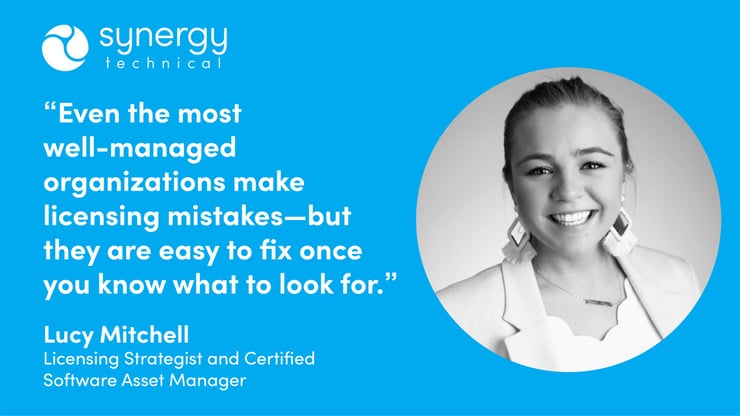The Most Common Microsoft Licensing Mistakes I See—And How to Fix Them
I spend most of my day talking to customers about Microsoft licensing—what they have, what they need, and what’s actually being used. And if there’s one thing I’ve learned, it’s this:
Even the most well-managed organizations make licensing mistakes.
Sometimes it’s a matter of misunderstanding what’s included. Sometimes it’s the result of inheriting decisions made by someone who left the company. And sometimes it’s just that Microsoft licensing is… well, complicated.
The good news? Most of these mistakes are easy to fix—once you know what to look for.
Read more about Microsoft CSP:
- Paying for Features You Already Own
- This one happens all the time. A customer is using (and paying for) a third-party security or compliance tool—only to find out that Microsoft includes similar functionality in their existing licensing.
- Common examples:
- Paying for email encryption when it’s already included in Microsoft 365 E3 or Business Premium
- Using a third-party antivirus when Defender for Endpoint is bundled in E5
- Buying cloud backup or DLP tools without realizing Purview already covers it
- How to fix it:
- Start with a licensing and usage review. At Synergy Technical, we walk customers through exactly what’s included in their SKUs—no assumptions, no acronyms. Once you know what you have, you can evaluate whether external tools are still necessary.
- Over-Licensing for the Wrong User Roles
- Not every user needs the same licensing level. I often see customers assigning high-end SKUs (like Microsoft 365 E5) to employees who only need basic functionality.
- How it happens:
- A new user is added during onboarding using a “default” license
- No one goes back to reassess whether they need all the features
- The over-licensing continues indefinitely—and quietly inflates your spend
- How to fix it:
- Segment your users by role. Frontline workers, contractors, and part-time staff often need different licensing than executives or IT admins. We help our customers map roles to the right SKUs, saving money without reducing capability where it matters.
- Forgetting About Expired Add-Ons or Trial Licenses
- Microsoft trial licenses and temporary add-ons can quietly convert into paid SKUs—especially when no one’s monitoring the admin center regularly.
- How it happens:
- You try a product or add-on (e.g., Teams Premium or Defender Plan 2)
- It expires, but the subscription remains active
- You start getting billed for it—and might not notice for months
- How to fix it:
- Do a monthly or quarterly check of your licensing subscriptions and invoices. Better yet, work with a CSP partner (like us!) who monitors those changes for you and flags anything unusual.
- Assuming CSP Will Fix Everything Automatically
- Some customers move from an Enterprise Agreement (EA) to CSP thinking the switch alone will solve their licensing issues. But here’s the thing: CSP gives you more flexibility—it doesn’t replace the need for active management.
- Common misconception:
- “If I move to CSP, my billing and licensing will automatically align with what we need.”
- Reality:
- If your CSP partner isn’t proactive—reviewing usage, right-sizing SKUs, checking for redundancies—you can still overspend. You’re just doing it monthly instead of annually.
- How to fix it:
- Choose a CSP that doesn’t just invoice you. Choose one that checks in, reviews entitlements, and helps you make smarter decisions regularly.
What I Want You to Know
Licensing mistakes don’t make you a bad IT manager or finance lead. They just mean you’re busy—and Microsoft’s licensing ecosystem isn’t exactly user-friendly.
But the good news is that most of these issues are fixable—and the savings can be significant.
If you’re not sure what you’re paying for, or what you’re actually using, you’re not alone. Let’s take a look together. I’m here to help you simplify the messy parts and make sure your licensing strategy is working for you—not against you.
By Lucy Mitchell, Licensing Strategist and Certified Software Asset Manager, Synergy Technical.
Ready to transform your licensing strategy? Contact us today to schedule a consultation, learn more about the Microsoft CSP licensing benefits, or start optimizing your Microsoft cloud services with a trusted partner by your side. Let’s modernize your cloud journey together!





Comments